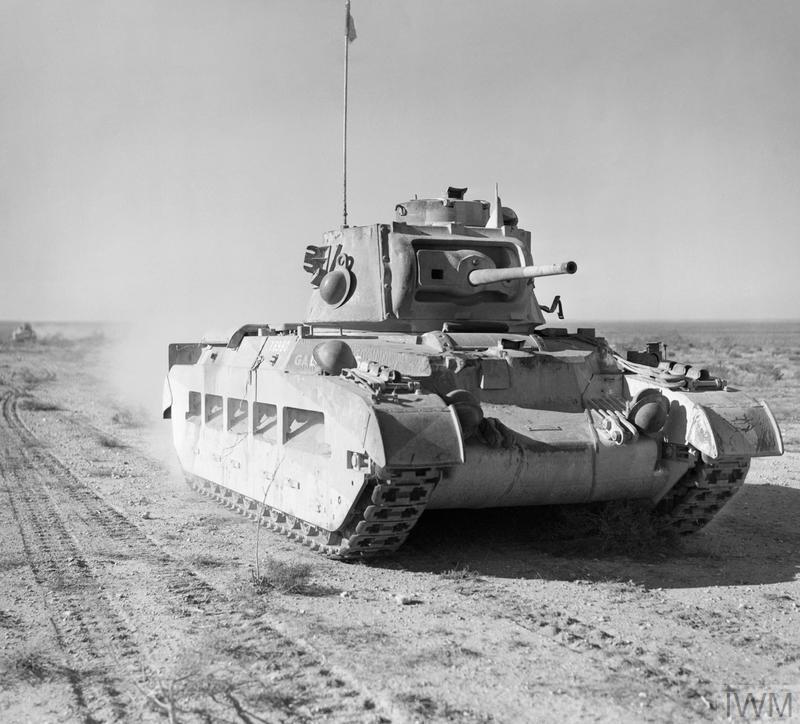Following Italy's entry into the Second World War on 10 June 1940, and France's surrender on 22 June, British Admiral Sir Andrew Cunningham's Mediterranean Fleet at Alexandria in Egypt was outnumbered and surrounded by a largely hostile shore. Admiral Sir James Somerville’s ‘Force H’ was sent to Gibraltar to cover the western Mediterranean, filling the vacuum left by the French after their surrender.
The British then began denying the Axis powers – Germany, Italy and their allies – access to the Mediterranean, disrupting the flow of vital supplies to German and Italian forces fighting in North Africa.
On 21 November 1940, Cunningham's torpedo bombers sank three Italian battleships at Taranto and on the night of 27-28 March 1941 he defeated the Italian fleet at Cape Matapan. The Italian cruiser Pola was crippled and later sunk, along with the cruisers Zara and Fiume and two destroyers. Three thousand Italian sailors were killed. Afterwards, the Italian fleet was generally ordered to avoid battle.
German aircraft were sent to support the Italians and crippled Cunningham's fleet around the island of Crete in May. Luftwaffe air attacks targeted Royal Navy ships evacuating British and Commonwealth troops and naval losses were so severe that on 30 May the evacuation had to be abandoned. Five thousand men were left behind.
Warships and strike aircraft based on Malta were the key to disrupting Axis supplies. Malta's submarines sank 300,000 tons of Axis shipping between July and September 1941, a situation described by the German naval liaison staff in Rome as ‘catastrophic’. They destroyed 63 per cent of all Axis cargoes bound for North Africa in November 1941, after most German aircraft had already left for Russia. This halted General (later Field Marshal) Erwin Rommel’s land operations in the theatre.
Attack on the French fleet at Oran

This photograph shows French sailors escaping from fires below deck, on board a badly damaged warship at Mers-el-Kebir in Algeria in July 1940. British Prime Minister Winston Churchill had ordered Somerville to bombard the French squadron. This risked war with Vichy France, but removed the possibility of French warships being used against Britain and signalled to neutral nations that Britain would fight on. Another French squadron at Alexandria was disarmed. Almost 1,300 French sailors died; most of the casualties occurred when the battleship Bretagne exploded.
The Luftwaffe returned in 1942, and raided Malta almost every day between 1 January and 24 July, neutralising the warships and aircraft. Supplies flowed again, allowing Rommel to advance to El Alamein. During March and April, 6,728 tons of bombs were dropped on Malta, killing 1,493 of its citizens and wounding 3,764 more.
On 15 April 1942, King George VI wrote to the Governor of Malta to tell him of his decision to award the George Cross to the island and its people, ‘To bear witness to a heroism and devotion that will long be famous in history.’ The siege was lifted in August 1942, when the Royal Navy fought through the ‘Pedestal’ convoy. Allied control of the Mediterranean became complete, helping to bring about the final Axis collapse
Malta: No Time to Lose

Malta: No Time to Lose - Soldier Dockers Unloading a Convoy During a Raid, 1943, By Leslie Cole.
Malta’s position mid-Mediterranean between North Africa and Italy made it vulnerable to attack. British efforts to re- supply Malta were at particular risk: during Operation Pedestal, a convoy bound for Malta from Gibraltar in August 1942, half the merchantmen were sunk by enemy attack. In 1943, when Leslie Cole visited Malta, the devastated island was still subject to air-raids and alerts as the Allied invasion of Sicily and the Italian mainland got underway. Some of Cole’s drawings in Malta show people sheltering from attack in underground shelters and running for cover. This painting of dock-workers has an urgency often found in his work, but the image has an almost theatrical air, with the central figure orchestrating the scene as if conducting a symphony. In this case the danger of the scene is subordinate to its mesmerising pattern, punctuated by the strange helmet-carapaces.
Despite supply lines of just a few hundred miles across the Mediterranean, Axis forces in North Africa were plagued by shortages compared to the British, whose supplies often travelled 14,000 miles (22,530 km) around Africa. This was the Royal Navy's contribution to the ‘Desert Victory’.





